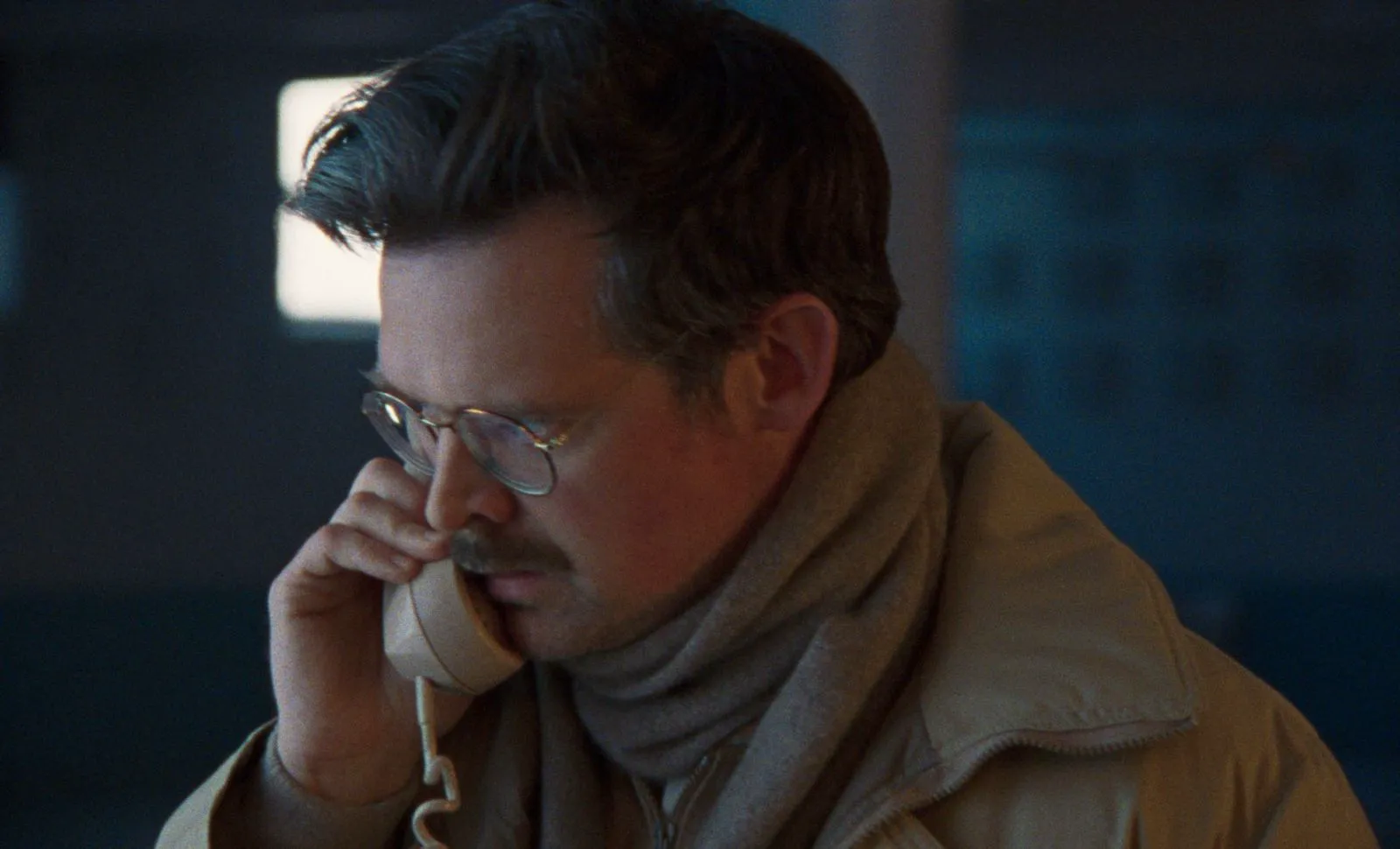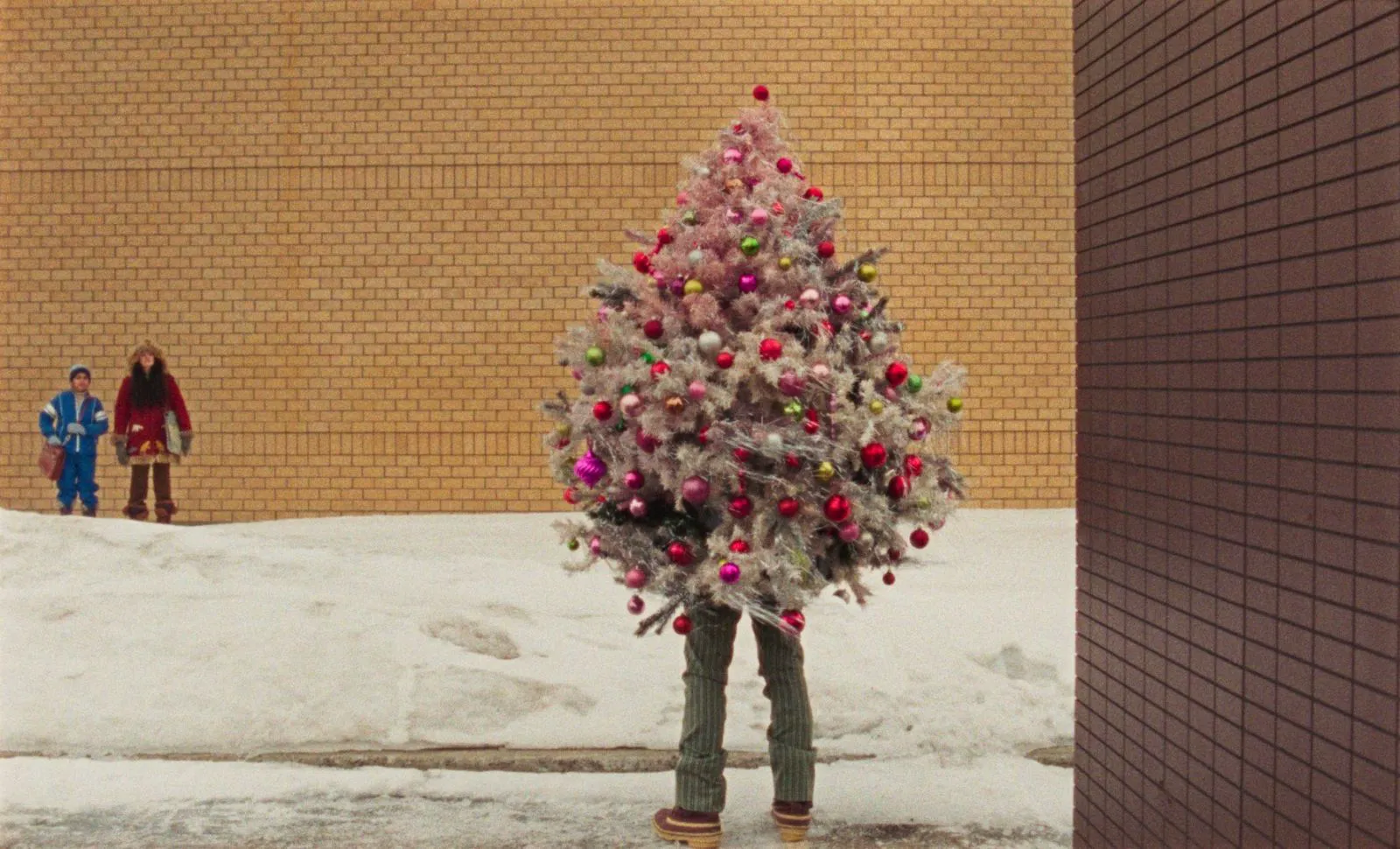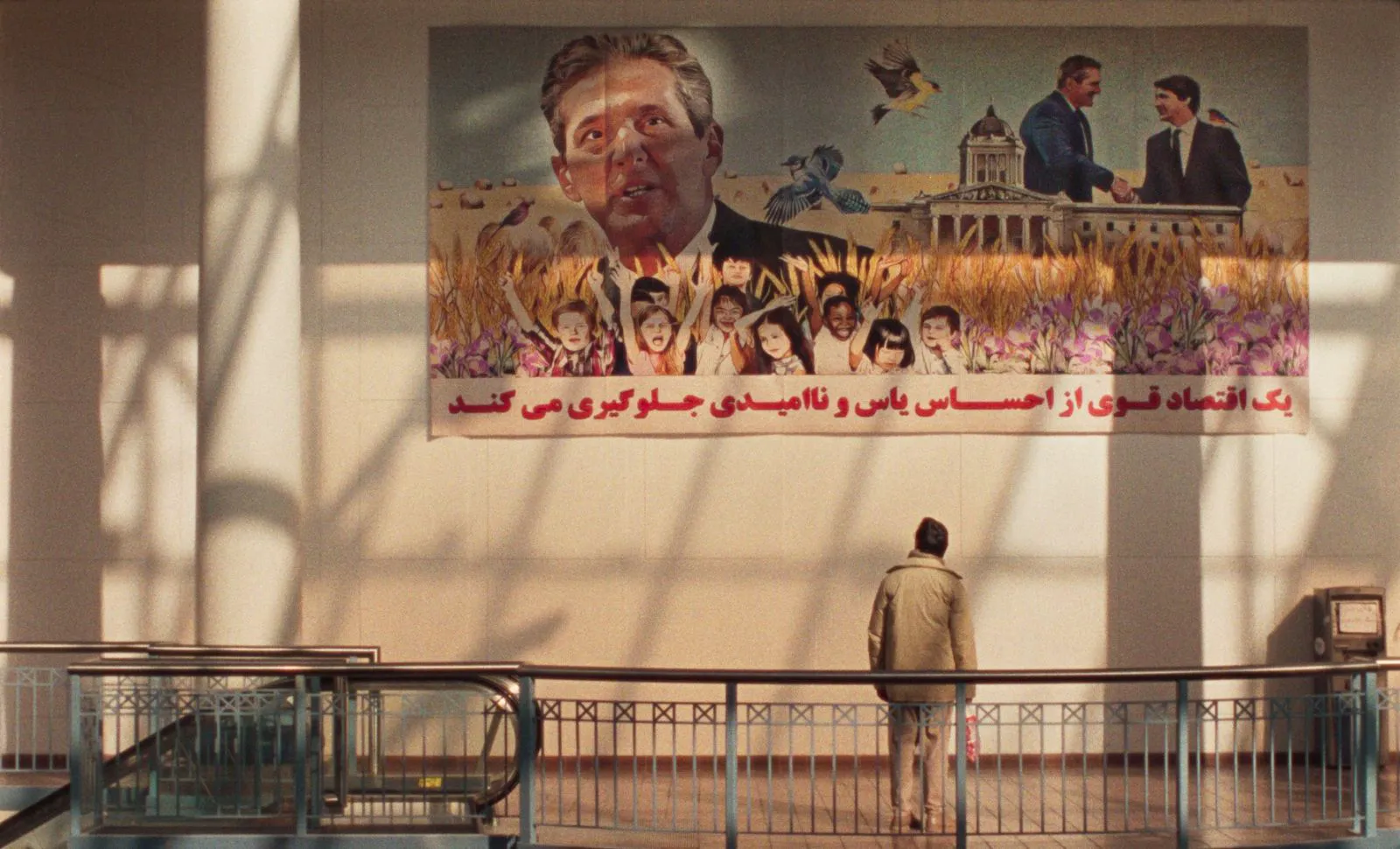A Surreal Winnipeg: Exploring “Universal Language”
Imagine a Winnipeg both sunny and frostbitten, yet utterly surreal. Picture rogue turkeys roaming the streets, schoolchildren on a quest for an axe, and a tour guide, Pirouz Nemati, leading a group through the city’s main attraction: an abandoned shopping mall. Now, add a twist – almost everyone speaks Farsi, sips tea from traditional armud glasses, and adorns their walls with Persian carpets. This is the whimsical, disorienting world Matthew (played by director Matthew Rankin) stumbles into in “Universal Language.” He’s returned to visit his mother after years of absence, but in his search, he seems to be losing himself.

Matthew Rankin as Matthew in a still from “Universal Language”
“Universal Language” is destined to be an outsider film, a hybrid of cultures, realities, and styles. The mundane aesthetic of a Canadian province, with its brutalist architecture, collides with the vibrant atmosphere of Tehran. Rankin blends nostalgia for childhood and home with influences ranging from surrealist Guy Maddin to the quiet dramas of Kiarostami and Parajanov’s “The Color of Pomegranates,” even drawing inspiration from television commercials. This postmodern exercise ultimately gives way to a raw and poignant sincerity.
Rankin’s Cultural Tapestry
Rankin’s playful exploration is not arbitrary. He’s a multifaceted artist with experience in documentaries, animation, and commercials, fluent in French, English, and Farsi. At 21, he moved to Iran to study at a local film school, embracing an internationalist identity. He absorbs cultures like a sponge, yet retains his unique voice. “Universal Language” feels like a manifesto against the isolation of the post-COVID era, where both nations and individuals are increasingly disconnected. Rankin’s film counters this by blurring boundaries, suggesting that nations are artificial constructs and we are all, in essence, residents of a frozen Winnipeg.

A scene from “Universal Language”
A Disorienting Journey
“Universal Language” immediately throws the viewer off balance. Matthew, and by extension the audience, enters an unfamiliar, skewed reality. It’s ostensibly Canada, but Farsi signs adorn buildings. It’s seemingly real, yet possesses the Wes Anderson-esque aesthetic of a puppet show: butchers profess love to turkeys, schoolchildren dress as Groucho Marx, and tour guides showcase a forgotten suitcase at a bus stop, all against a backdrop of brutalist towers and beige apartment blocks. The plot, in the traditional sense, is almost nonexistent. Even when the camera lingers on a character for more than five minutes, they engage in the most mundane activities: sipping tea, shoveling snow, or wandering through a cemetery with a bag of nuts.

Matthew Rankin as Matthew in a still from “Universal Language”
Finding Connection in the Absurd
In the hands of a different filmmaker, the film’s eccentricities might become grating. However, Rankin genuinely loves his quirky characters and revels in their minor misadventures. The film is also deeply personal, incorporating dreams about his deceased mother, a pain that resonates powerfully in the film’s conclusion. What begins as a nostalgic reverie transforms into a raw and vulnerable exploration of loneliness, the fear of being a stranger in one’s own home, and the fragile connections that bind us to people and places.
Returning to his hometown, Matthew struggles to find his place. The more time passes, the more he (literally) loses his identity. The Farsi signs, the strange teenagers, and his mother, who has seemingly replaced him with a new son, all conspire to push him back to the sterile office buildings of Quebec. Rankin suggests that salvation lies in understanding the “other,” not through argument or questioning, but through empathy and silent gestures of connection. Empathy may not thaw Winnipeg’s eternal snowdrifts, but it can warm the hearts of its inhabitants.